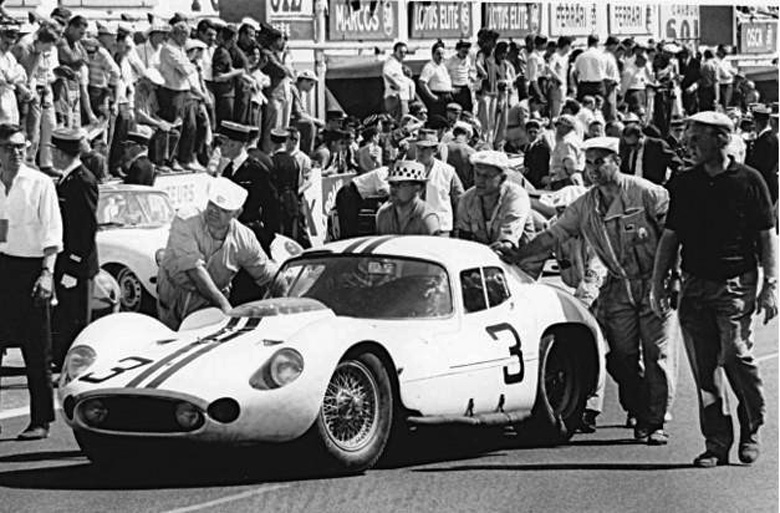
Le Mans, June 1962. The Kimberly/Thompson Tipo 151, chassis 006, being pushed to its start position. On the left Maserati suspension designer Gianpaolo Dallara and chief mechanic Guerrino Bertocchi, on the right Cunningham team manager John Baus. (Flip Schulke)
By Willem Oosthoek
The 1962 season would turn out to be a low point in term of the number of race appearances for Bill Kimberly. Occupied with his corporate job at Kimberly-Clark in London, and with his Ferrari 500TR sold, he appeared trackside only twice. But they were memorable rides, both again with the Briggs Cunningham team.
Although Briggs showed up in force at Sebring in March, Bill was unable to make it. But in Europe competition would be easier to arrange based on his vacation days. Across the English Channel, Le Mans was only a short distance away.
Cunningham had ambitious plans for the 24 Hours. At his insistence, and that of John Simone of Maserati France, Maserati developed the Tipo 151, a 4-liter V8 Coupe especially designed with Le Mans conditions in mind. Three were built, with the prototype (chassis 002) going to Simone, and the next two (004 and 006) to Cunningham. In April a special test weekend was staged by the Le Mans organizers, but unfortunately, none of the three cars were yet race ready. The Cunningham drivers were stuck practicing Briggs’ rather slow Jaguar E-type.
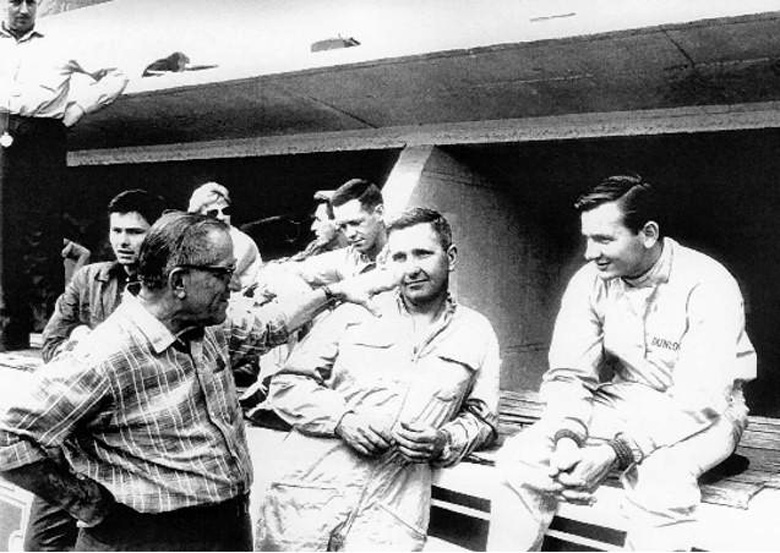
Le Mans, April 1962. During the test weekend Cunningham’s chief mechanic Alfred Momo seems to console his drivers, Bill Kimberly, Walt Hansgen and Bruce McLaren, with the message that faster cars will soon be available. (Bill Kimberly Collection)
By June, the three still relatively untested Tipo 151 Coupes arrived at La Sarthe and they caused quite a stir. Their inspiration came from the Costin-designed, Zagato-bodied 450S Coupe, hopefully without the errors made in 1957 with this hastily completed one-off model.
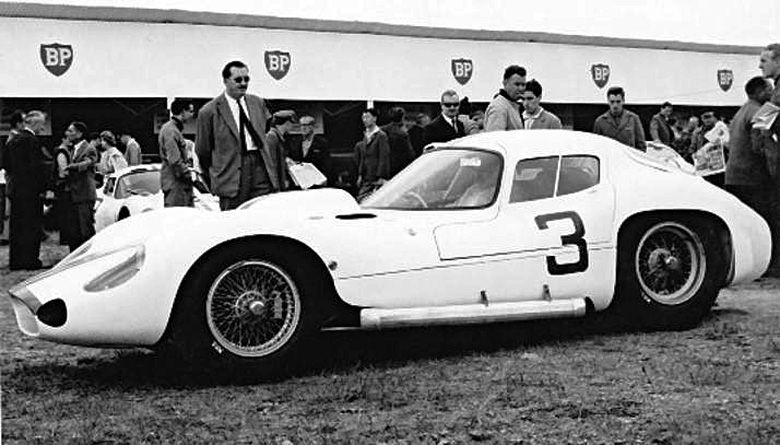
Le Mans, June 1962. Chassis 006, assigned to Bill Kimberly and Dick Thompson, going through scrutineering. (Henri Beroul)
Cunningham’s original Tipo 151 driver’s selection was Bruce McLaren/Walt Hansgen in chassis 004 and Roy Salvadori/Dick Thompson in chassis 006, with Briggs and Bill Kimberly sharing the E-type in GT class. But during early practice runs the tall Salvadori felt uncomfortable in the confined cockpit and the decision was made to switch the 5’10” Kimberly to chassis 006, with Roy sharing the E-type with Briggs.
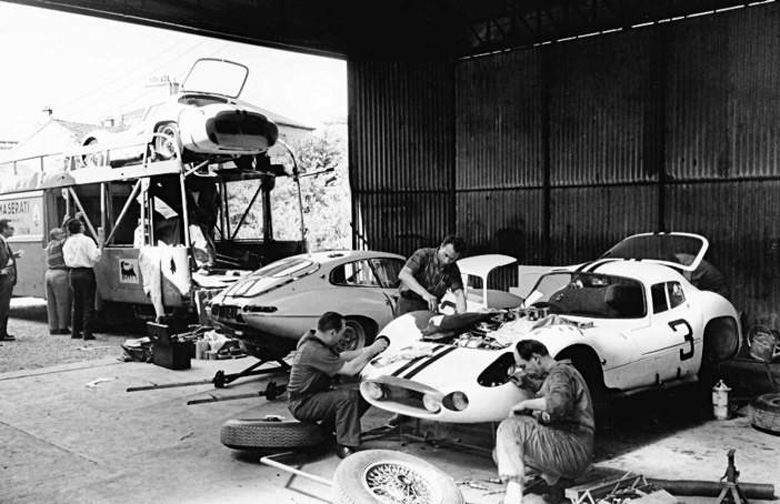
Le Mans, June 1962. Last minute preparations on chassis 006. Closest to the camera is Maserati mechanic Livio Sognani. On the left Adolfo Orsi, owner of Maserati, and chief mechanic Alfred Momo can be seen. (Flip Schulke)
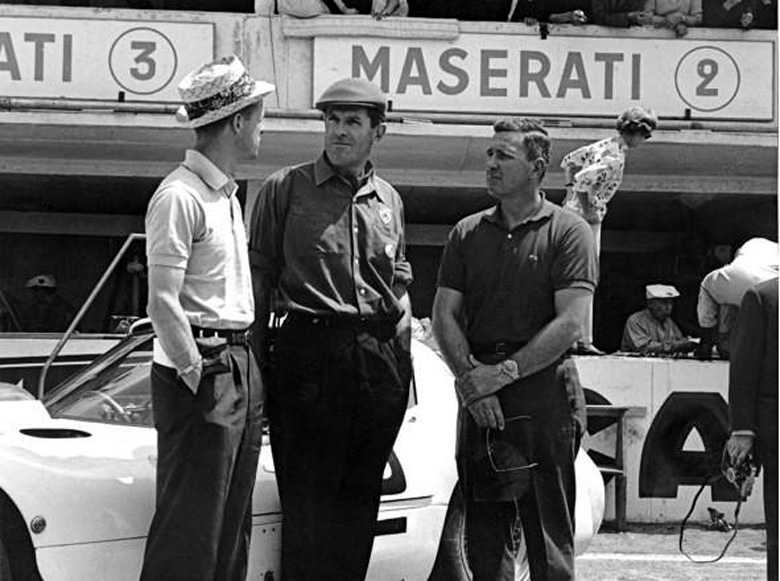
Le Mans, June 1962. SCCA racers Bill Kimberly, Jesse Wyllie and Walt Hansgen in front of the Maserati pits. Wyllie shared a works Lotus Elite with Clive Hunt. And that is Dick Thompson’s wife on top of the pit wall. (Al Bochroch)
Practice went well for the Tipo 151 Coupes. They were quick and robust, qualifying 3rd fastest (Thompson with #3 in 3:59.1) and 5th fastest (McLaren with #2 in 4:01.3), although the starting grid was still based on engine size in those days. Bill Kimberly was chosen to do the foot race on #3. Across the road from the car, he lined up between McLaren and Maurice Trintignant, who drove the Maserati France Tipo 151. When asked how it felt taking his first Le Mans start in a major endurance race, Bill replied: “Well, you had a job to do and you were concentrating on that. Bruce was a good friend, but I did not know Trintignant. I think I got the proper perspective in 1959 from E.D. Martin. Before the start he took me for a walk halfway down pit lane and in that wonderful Georgia accent he said: ‘Look around, soak it up, because in an hour from now you’ll be too busy to think about it.’”
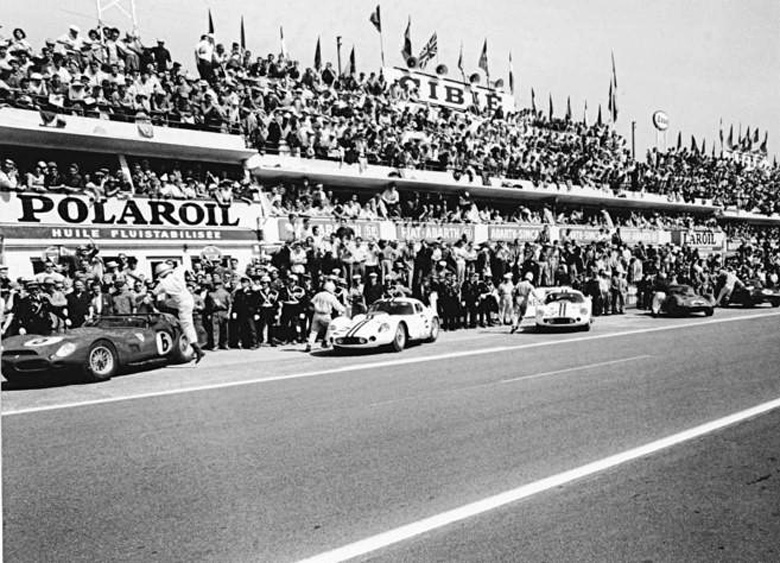
Le Mans, June 1962. The advantage of an open car. Olivier Gendebien, wearing work boots, is halfway into the cockpit of the Ferrari 330TR/LM he shared with Phil Hill, while McLaren, Kimberly and Trintignant have yet to reach their car doors. (Flip Schulke)
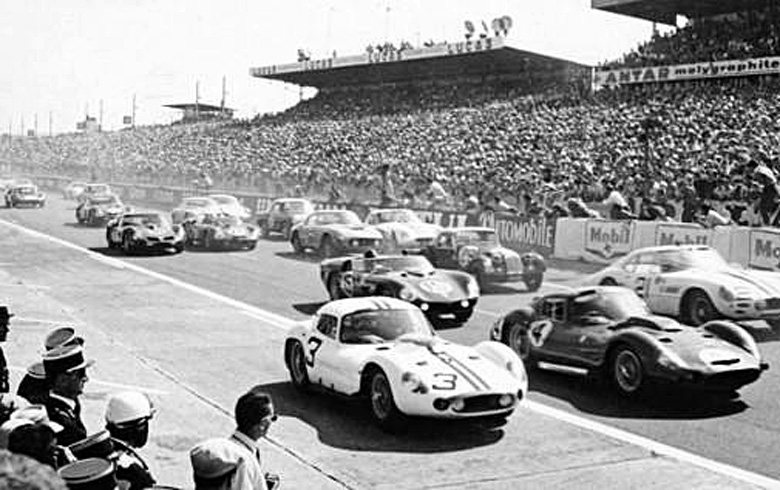
Le Mans, June 1962. The start from another angle, with Kimberly and Trintignant in their Tipo 151 Maseratis, followed by Dan Gurney in Count Volpi’s Ferrari 250TR61. (Henri Beroul)
Bill did not make a fast getaway, but at the end of the opening lap he was already running 8th overall. At the end of each of the first four hours he and Thompson occupied 3rd, 2nd, 6th, and 3rd overall, major contenders for the lead that they briefly captured at one point, when Gendebien’s Ferrari pitted. Bill: “We were not pushing it and were comfortable holding in 2nd to 6th position. Dick had just taken over the car after a pit stop that included a change of brake pads. He went out and spun in the Esses. Nothing too serious, but he clipped the wall with the Maserati’s tail, which contained the oil coolers. They broke and the oil leaked out. It was a shame because the car was still drivable. But the regulations did not allow oil refills that soon and consequently, we were out.”
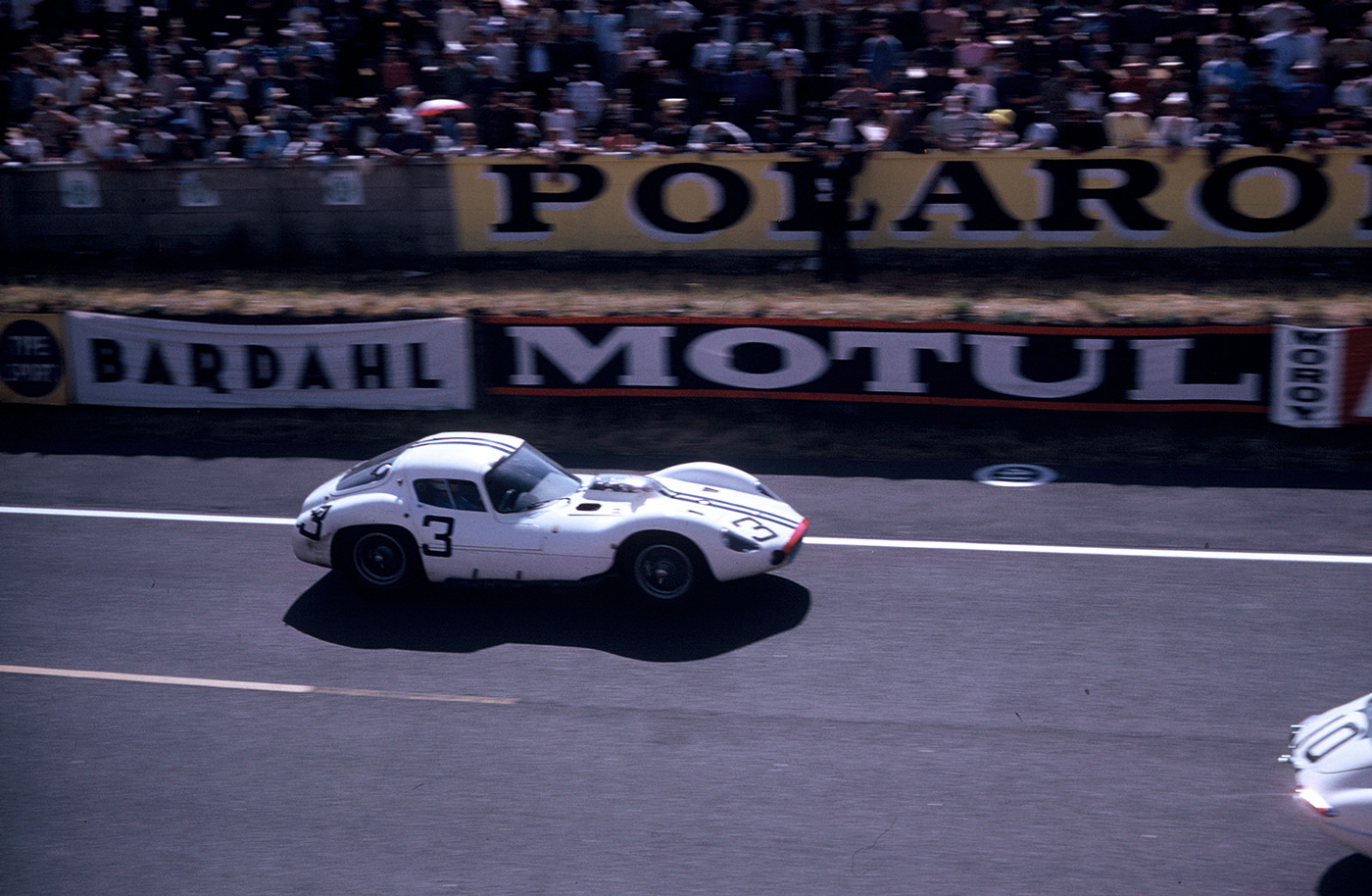
Le Mans, June 1962. Bill’s Tipo 151 at full blast in front of the pits, about to lap the E-type of Briggs Cunningham. (Flip Schulke)
After the race it turned out that Thompson was sent on his way with unbedded brake pads, which caused the crash in the Esses. When asked what he thought of the Tipo 151, Bill replied, “The car was fun for me. It felt like the big car it was. Compared to the E.D.’s 3-liter Testa Rossa and the Corvette, the Tipo 151 was surprisingly stable for the speeds developed on the straight toward Mulsanne. Its speed kept creeping up. The top speed of our car was 281 km/hour in the race, although we actually did 304 km/hour during practice. In practice, when Walt Hansgen in the other Tipo 151 slowed early at Indianapolis, I remember outbraking and passing him without much effort. It was fun going through Tertre Rouge in third gear, just stick your foot on it, and hustle through, then into fourth and down the hill into the Mulsanne straight.”
After so much promise, all three Tipo 151 Coupes retired at Le Mans and victory went to Ferrari again. The only consolation for Briggs was the fact that he and Salvadori took the Jaguar E-type to a 4th place finish. The Maseratis went back to Modena to be rebuilt and both Cunningham cars saw action in the U.S. later on. As for Bill, in August the SCCA invited him to be its correspondent for the German Grand Prix at the Nürburgring and he wrote the report for its magazine Sports Car.
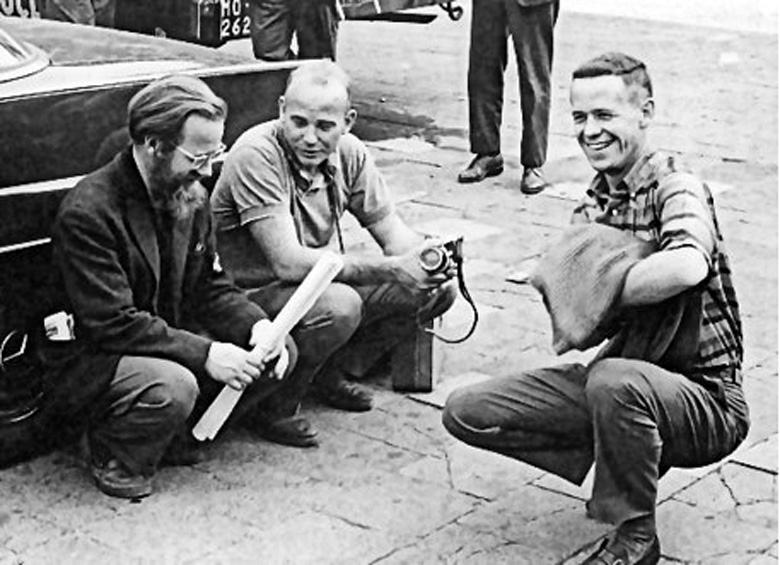
Nürburgring, August 1962. Making new friends, Bill with two fellow race correspondents: Denis Jenkinson and photographer Jesse Alexander. (Bill Kimberly Collection)
Bill had to come over to the U.S. for his second and final race of the year, the Road America 500 in September. He was paired with Roger Penske, who put their car, the Cunningham-owned Cooper Monaco T57, on pole. Chassis CM/1/62 was ordered by Briggs without an engine and subsequently shipped to Maserati for the installation of a 4-cylinder, 2.9-liter unit, normally found in the Tipo 61 Birdcages.
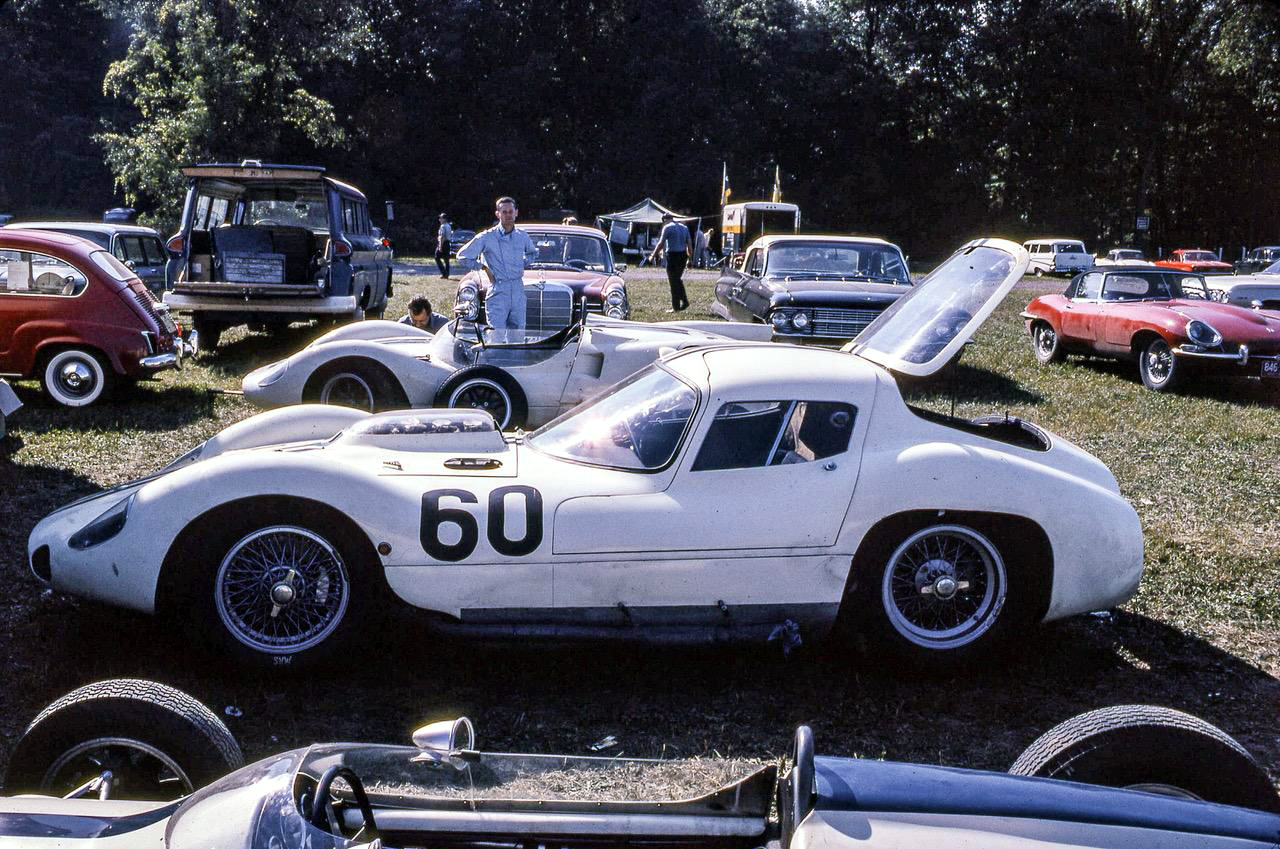
Road America, Wisconsin, September 1962. Bill Kimberly stands next to the Maserati-engined Cooper Monaco T57 assigned to him and Roger Penske. On the foreground is the Tipo 151 (chassis 004) in its first U.S. appearance. Walt Hansgen and Augie Pabst would race it in the 500-miler. (Dale LaFollette Collection)
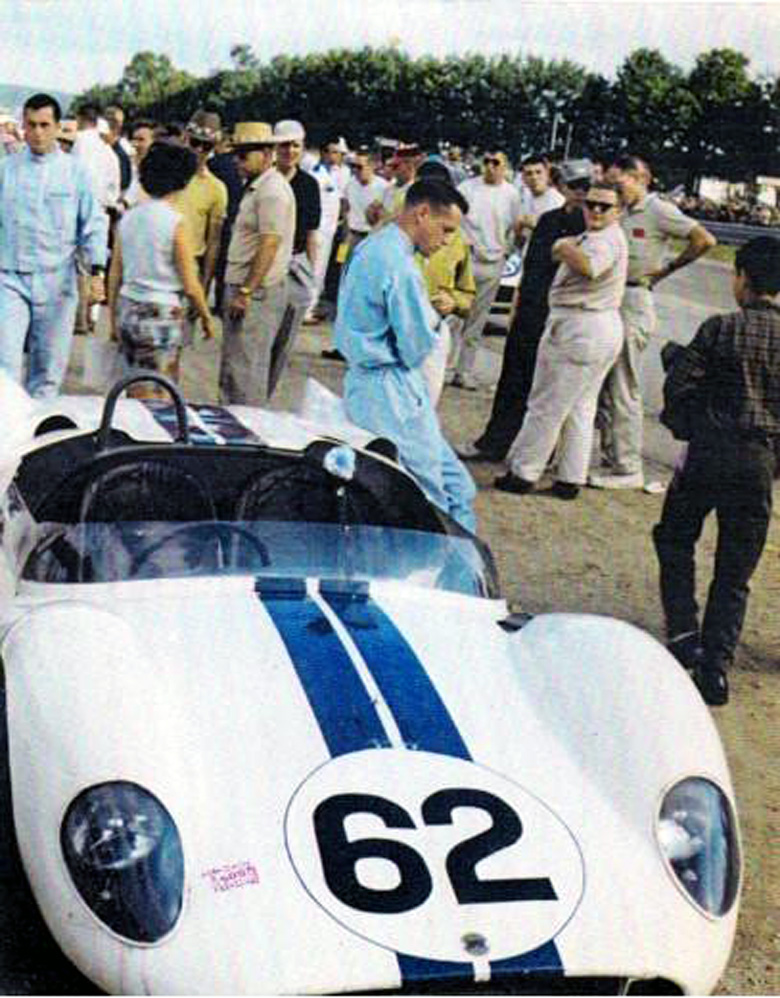
Road America, Wisconsin, September 1962. Bill in deep thoughts before the start. Behind the Cooper Monaco/Maserati is co-driver Roger Penske. The car was chassis CM/1/62. (Bill Kimberly Collection)
The starting grid at Road America was a staggered one, with the faster entries, assumed to be those in DM class, up front, followed by the CM class entries such as the Tipo 151, Harry Heuer’s Scarab and Jim Hall’s front-engined Chaparral. The start itself was a rolling one behind a pace car.
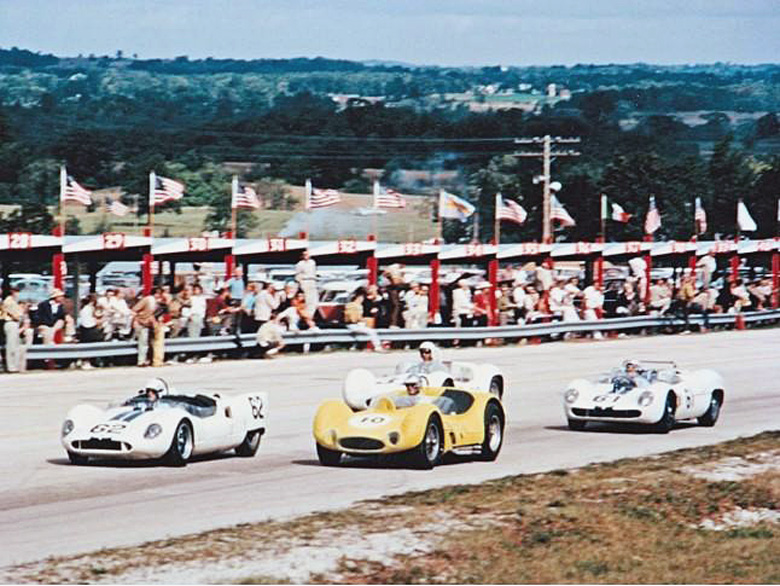
Road America, Wisconsin, September 1962. Bill’s Cooper Monaco/Maserati and Alan Connell’s V12 Testa Rossa-engined Birdcage Maserati lead the field in a rolling start. On the second row of this pack of DM cars are the Maseratis of Don Skogmo (Tipo 61) and Briggs Cunningham (Tipo 64). (Gary Trobaugh)
Bill led until turn 2, where he missed a shift and was passed by Heuer’s Scarab and Hall’s Chaparral. Although still in 3rd place, shifting became increasingly difficult. Soon the Cooper/Maserati had to be retired because it had was impossible to change gears. One of the Cunningham mechanics had failed to tighten the transmission drain plug and it went missing. The car had lost all its transmission oil. Bill: “Everything went perfectly. I took the lead when the flag was waved. Then I missed a shift coming out of turn 2 and Harry Heuer’s Scarab and some others passed me. Within a lap or two I had to come in as the car had suffered ring-and-pinion failure. Walt Hansgen told me later that there was no sign of the transmission drain plug, which must have fallen off.”
After Cunningham’s success story at the Road America 500 in 1961, this year became a disaster. His remaining cars, the Tipo 64 and Tipo 151 Maseratis dropped out as well, and victory went to Jim Hall and Hap Sharp in their Chaparral.
Bill’s final race for the Cunningham team came at Sebring in March 1963. He shared one of the three Jaguar E-types entered by Briggs, with Paul Richards as his co-driver.
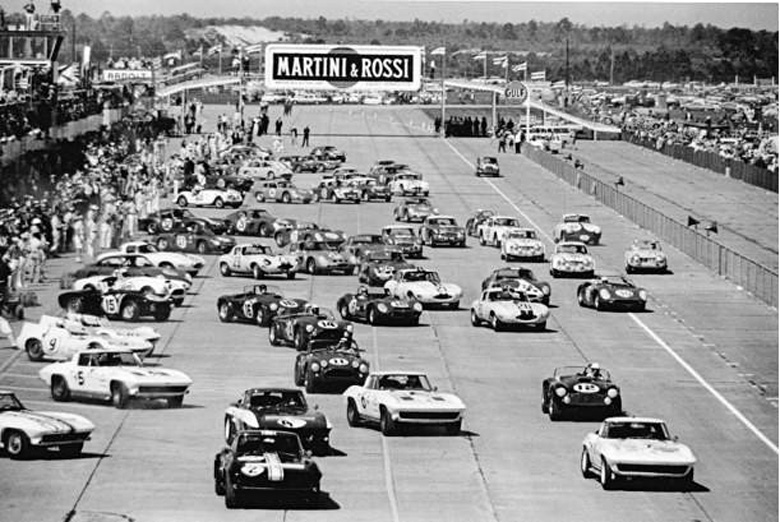
Sebring, Florida, March 1963. Start of the 12 Hours, with Bill at the wheel of the E-type Jaguar #21, chasing teammate Bruce McLaren in #20. (Flip Schulke).
Bill: “We finished a low 19th overall due to the fact that a wheel broke. Paul was two-thirds out on the course when it happened. He got out of the car, got the spare wheel, but had to run to the pits to get a jack. He changed the wheel, but we lost about 50 minutes, dropping substantially in the standings. Otherwise, the car ran well, and Paul was a good driver.”
In addition to racing a Jaguar E-type at Sebring in 1963, Bill also used an E-type Coupe for his personal transportation around England. He bought the car in 1962 for $4,513 and used it for 18 months, before switching to a more mundane Ford Cortina. Little did he realize that his next race would be against the Cunningham E-types.
Coming up: Part 6 and last: Racing the works Aston Martins.

This is a fantastic series. Should be made into a book!
In Part 1 the second picture shows Ferrari 212 Export Barchetta Touring s/n 0102E at the Iowa City Sports Car Races paddock on May 30, 1955.